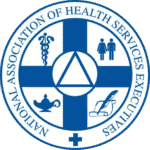Planning for the retirement of your CEO’s, C-Suite members, Clinical Leaders and Providers is critical to ensure service delivery in your clinic, no matter its size. According to the numbers, two of every five of the physicians on staff are near or ready to retire and a third of the CEO’s are retiring in the next few years. This article will help you plan for the inevitable loss of some of your most seasoned veteran associates.
The State of Recruitment 2021
The Association of Medical Colleges (AAMC) has been warning us for years that a physician shortage is coming. In the next few years, they tell us to prepare for significant shortfalls in both primary and specialty care. Organizations need to increase the number of residency spots, and we need more healthcare executives, physicians, nurses, and frontline workers at every level. But that’s just one arm of what should be a two-pronged approach to try to shore up your organization for the inevitable retirements to come.
Community healthcare facilities must confront their various retirement planning scenarios proactively. The first step is to have a retirement conversation with your team members to address and understand what to expect in the coming years. You may be surprised at some of the issues plaguing your teams:
- First, the impetus for retirement isn’t just related to aging. In our daily conversations with clinical and non-clinical staff, we’ve found plenty of evidence of frustration with the current state of medicine and burnout. Nursing Times reports on the steep rise in the number of nurses considering leaving the profession entirely. According to the New York Times, doctors are doing the same. FQHC leaders and executives are not immune from the same issues.
- Second, many doctors can be uncomfortable talking about their retirement. They may know it’s their responsibility to bring up the subject, but they are highly aware of the responsibilities placed on their shoulders. This is especially true in community health settings with long time patient relationships having been established. The same can be said for administrators of these organizations that hold such an important place serving underserved Americans.
As difficult as it may be, now is the time to begin having these “crucial conversations” with your clinical and administrative teams. How can organizations use what they learn during these discussions to help prepare for what’s ahead?
Retirement Staffing Planning
Establishing a formal process to discuss retirement should be a standard part of your employee review process. Your goal is to allow the process to dictate the necessity of the conversation while opening the door to a dialogue. Developing a succession plan should be a standard part of the career road-mapping you do with each of your high-level team members. Look at this process as a way to talk about both full retirement but also reduced schedules, telemedicine, consulting or PRN as an alternative to going off the job completely. You may be surprised both by how many staff members want to leave but also by how many want to stay in a more limited capacity!
UHC Solutions can help your organization with succession planning by partnering with your organization to provide customized healthcare recruiting for FQHCs and Community Health Centers around the country. Talk with our team today to create a more proactive partnership to keep your organization at full strength in the coming years.









